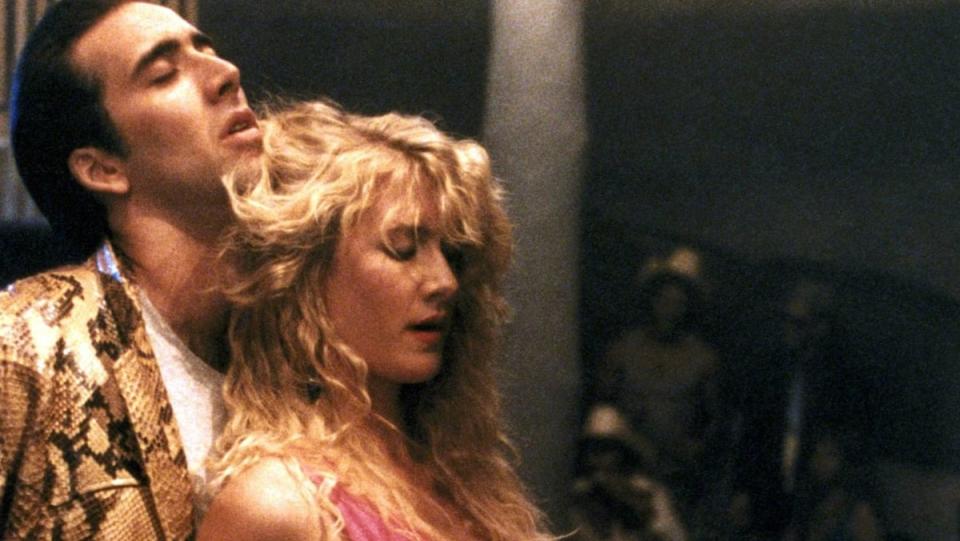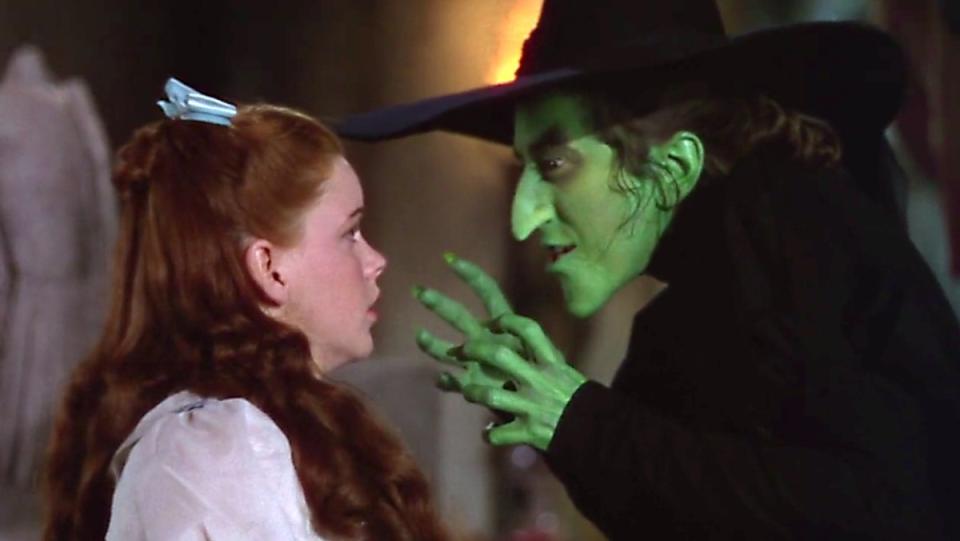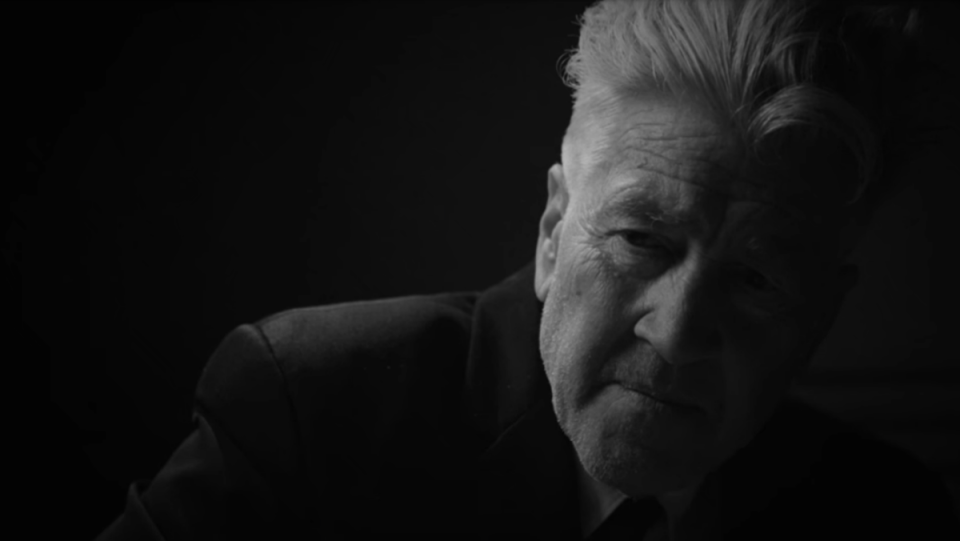How WILD AT HEART Brought Surrealism Over the Rainbow
Jennifer Lynch, daughter of David Lynch, can only recall her father yelling at her on one occasion. She was a kid—maybe seven or eight—when he caught her thumbing through a copy of Helter Skelter, the notorious true crime account of the Manson murders. In a 2012 interview with Vice, Jennifer recounted her filmmaker father’s reaction to seeing her with the book. “He squatted down in front of me and I remember the sunlight surrounding his head,” she explained. “And he said, ‘There is darkness and then there is light. And then there is evil.’ And he grabbed the book out of my hands and pitched it across the yard and said, ‘This is evil!'”
Surely, the man behind films like Eraserhead, Blue Velvet, and the television phenomena Twin Peaks knows about evil. Lynch’s work is inexplicably dark, punctuated by dastardly acts of violence and horrific imagery. Think of the nightmarish “baby” of Eraserhead, its slimy, alien body recalling Francis Bacon’s Three Studies for Figures at the Base of a Crucifixion. A portrait of fatherly fear made explicit. Or recall, if you will, Laura Palmer in Fire Walk with Me, the cinematic prequel to Twin Peaks. A woman maligned by expressionistic male violence. Which makes it all the more surprising he would guard his own child from the reality of the Manson murders, some of the grisliest crimes in American history.

The Samuel Goldwyn Company
But really, it makes a lot of sense. Because behind Lynch’s macabre and gothic façade is the tenderest of hearts. Twin Peaks isn’t about Laura Palmer’s murder, but her life—the series does well to observe her good nature: that, despite what would become of her, she was a volunteer and tutor and mentor and friend. Eraserhead and Blue Velvet and Lost Highway and Mulholland Drive aren’t really horror stories, either. Not at their core. They are fantasies and fairy tales, with ladies in the radiators and protectors in the woods and angels in the sky. And most of all, they’re love stories.
If there’s one film that encapsulates Lynch’s strengths—as not just a storyteller, but a gee-golly optimist—it’s Wild at Heart. The film, which celebrates an anniversary this August, is criminally under-seen. (Which is nobody’s fault: it’s unavailable to stream or rent, although it is available on Blu-ray thanks to Shout! Factory.) But it’s a foundational part of Lynch’s filmography. The film won the Palme d’Or in 1990 at Cannes, a controversial choice as it was famously booed after the premiere. It’s hard to judge that initial audience, however. Wild at Heart is a strange film. It’s one of Lynch’s most conventional features, as it follows a straightforward plot and doesn’t rely on his infamous dream-logic optics. But maybe that’s why it sits so awkwardly in his catalogue. Because folks aren’t sure what to make of a romance odyssey with this kind of gristle.
Wild at Heart stars Nicolas Cage and Laura Dern as Sailor and Lula, a pair of star-crossed lovers with fiery spirits and roaring passion. Sailor’s a convict imprisoned for a self-defense murder. He reunites with girlfriend Lula upon his release, which infuriates her mother, Marietta (played by Dern’s real-life mother Diane Ladd). Marietta hires a hitman to off Sailor, but things get hairy when Sailor teams up with old buddy Bobby Peru (a truly deranged Willem Dafoe) for a robbery. Sailor can’t stay out of trouble and Lula can’t stop loving him despite it, and Wild at Heart is an odd ode to their unconventional romance.
It may be sweet, but make no mistake: the film is still punctuated with Lynch’s trademark (“Lynchian”) weirdness. Bobby Peru has a frightening look, familiar and distorted like a dripping face Dali portrait. Lynch regular Sherilyn Fenn turns up in a cameo as the victim of a car accident, whose appearance is a bloody interlude; the phantom notes of the lullaby that disorient before they ease. Marietta has a meltdown where she paints her face in crimson lipstick and theatrically vomits after a phone call with Harry Dean Stanton.

Metro-Goldwyn-Mayer
But Wild at Heart also contains some of Lynch’s sweetest moments, many of them papered in references to The Wizard of Oz. That 1939 technicolor classic had a notable impact on Lynch’s career. In that film—based on the classic children’s novel by L. Frank Baum—a beautiful young woman named Dorothy Gale (Judy Garland) is transported to a serene but haunted fantasy world after a tornado carries her Kansas farmhouse to the land of Oz. There, she encounters sentient scarecrows and flying monkeys and witches both good and evil. The movie features ghoulish imagery: Margaret Hamilton’s cackling, green-faced Wicked Witch of the West; the demonic tornado filling the frame with its sepia terror; the projection of a wizard head floating maniacally over angry flames. It’s as surrealistic as Bacon and Magritte and Miró.
And yet, The Wizard of Oz is a film about hope, dreams, imagination. Concepts instrumental to Lynch’s own storytelling. Through the vulgar irregularities is a hardened truth: that goodness perseveres. In Wild at Heart, a soured Sailor gets a visit from a pink witch in a bubble, played by Laura Palmer actress Sheryl Lee. This allusion to Billie Burke’s Glinda the Good Witch from Oz is beautifully luminescent. She also delivers a message: “If you’re truly wild at heart, you’ll fight for your dreams. Don’t turn away from love, Sailor. Don’t turn away from love.”
Lynch’s Wizard of Oz love shines in his other works. Twin Peaks contains a number of references. (“Judy” is a key character in that world, a nod to Judy Garland; one of Judy’s inquisitors is a character named Garland Briggs.) And Oz helped Lynch deviate from Wild at Heart’s source material, a novel by Barry Gifford. In the book, Sailor and Lula break up for good. In the film, Sailor professes his undying love to Lula—and their young child—by singing Elvis Presley’s “Love Me Tender” as the credits roll. It’s brash and hopeful and unabashedly romantic.
It’s an ending of a piece with Lynch’s other works, lest you forget. To the good persevering at the end of Blue Velvet. And to Laura’s ascendance in Fire Walk with Me. Or to the peaceful tragedy in the closing moments of Mulholland Drive. And even to the story of Lynch’s daughter Jennifer, who couldn’t read Helter Skelter but who found her own weird way forward. She’s now as a successful director in her own right, helming episodes of American Horror Story and Ratched and the new Gossip Girl. Her father steered her away from pure evil so she could find her own way to decode it.

Netflix
David Lynch once said, “Negativity is the enemy of creativity.” Wild at Heart is the distillation of this idea. Cracked and downtrodden and ready to submit to evil, Sailor summoned a bubblegum vision from deep within and chose love instead. Shouldn’t we aspire?
The post How WILD AT HEART Brought Surrealism Over the Rainbow appeared first on Nerdist.

